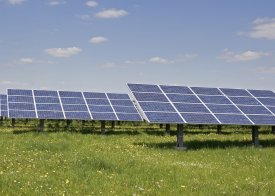Morgan Technical Ceramics Chemical Vapor Deposition Materials business (MTC - CVD Materials) is to offer its Performance Pyrolytic Boron Nitride (PBN) material for use in manufacturing of the photo absorption layer in thin film photovoltaic (TFPV) cells. Performance PBN is an excellent material for crucibles and evaporation boats used in producing the TFPV cells, as well as for coating graphite heating elements used for material vaporisation.

In solar cell production, thin film deposition offers a simpler and more cost effective alternative to using silicon wafers. Thin films use less material and are much faster and simpler than the complex and delicate process of slicing, dicing and placing of silicon wafers. However, cost of deposition must be reduced and the efficiency of the resulting PV cells sufficiently increased to make solar electricity as inexpensive to generate as carbon-based methods. Use of the PBN material in the TFPV process is considered an important innovation that will make the goal of using solar energy to generate more of the world’s electricity more attainable. Morgan Advanced Materials CVD Materials is working with leading players in PV cell manufacture in the USA, Europe and Asia, supplying a wide variety of components for thin film solar cells.
In the TFPV deposition process, precursor vapors are transported from a source vessel into a deposition zone onto a heated substrate to deposit the PV layer. In some instances, solid materials are melted and vaporised from ceramic crucibles or boats to form a flux that is deposited on the heated substrate. It is critical that the ceramic crucible or boat be dimensionally stable and chemically non-reactive to the molten source material. PBN ceramic is an excellent material because of its high corrosion resistance and non-reactivity with the source materials used in PV deposition.
The PBN material is highly anisotropic (directionally dependent) in its thermal transport and very resistant to thermal shock. PBN is also an excellent electrical insulator. The material is stable in inert and reducing atmospheres up to 2800°C and in oxidizing atmospheres to 850°C.